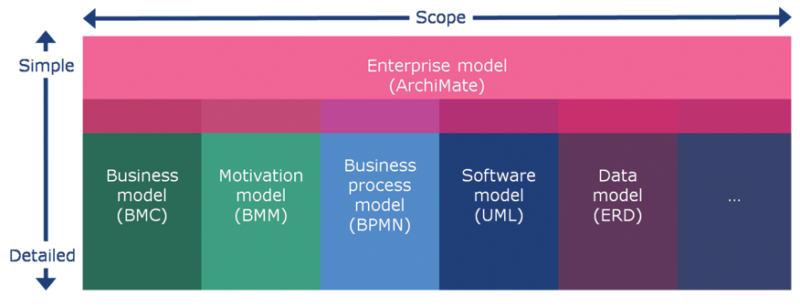Since the release of ArchiMate 3.0 last June, my colleagues and I have written a series of blog posts about combining ArchiMate with other standards, methods and modeling techniques. This post summarizes what we have shown you.
First of all, let’s repeat what we started with: ArchiMate is not intended to replace other standards and techniques, but rather to complement them. For many domains, there are languages and techniques available that have a narrower scope but a greater level of detail.
ArchiMate provides a broader description that helps to see the dependencies between different aspects and areas, and have a general overview of your enterprise. It can connect to those other techniques because there is a certain level of overlap in their concepts. The figure below depicts this.

Enterprise architecture model connecting other models
In this series of blog posts, we discussed the relationships between ArchiMate and the following other modeling standards:
Since it is only a modeling language, ArchiMate does not provide its own way of working , but it will of course be used in the context of such a process. Much has been written about using ArchiMate together with TOGAF – both Open Group standards and easily complementary – and we did not want to repeat that. A useful source on combining these is the book The Practice of Enterprise Architecture.
Next to this typical use in the domain of enterprise architecture, we discussed the relevance of architecture and ArchiMate in the context of agile development. Although the role of models in an agile approach is different from the traditional ‘big design up front’ development style, they serve an important purpose in ensuring coherence across different timescales, iterations and domains. You need to make sure that agile teams work with and not against each other and avoid creating silos, and you want to align everyone from strategy to operations along the same purpose. Creating, evolving and sharing just-in-time models that capture the information necessary to make the right decisions at the right moment, at all levels of the organization, is the best way you can become a truly Adaptive Enterprise!